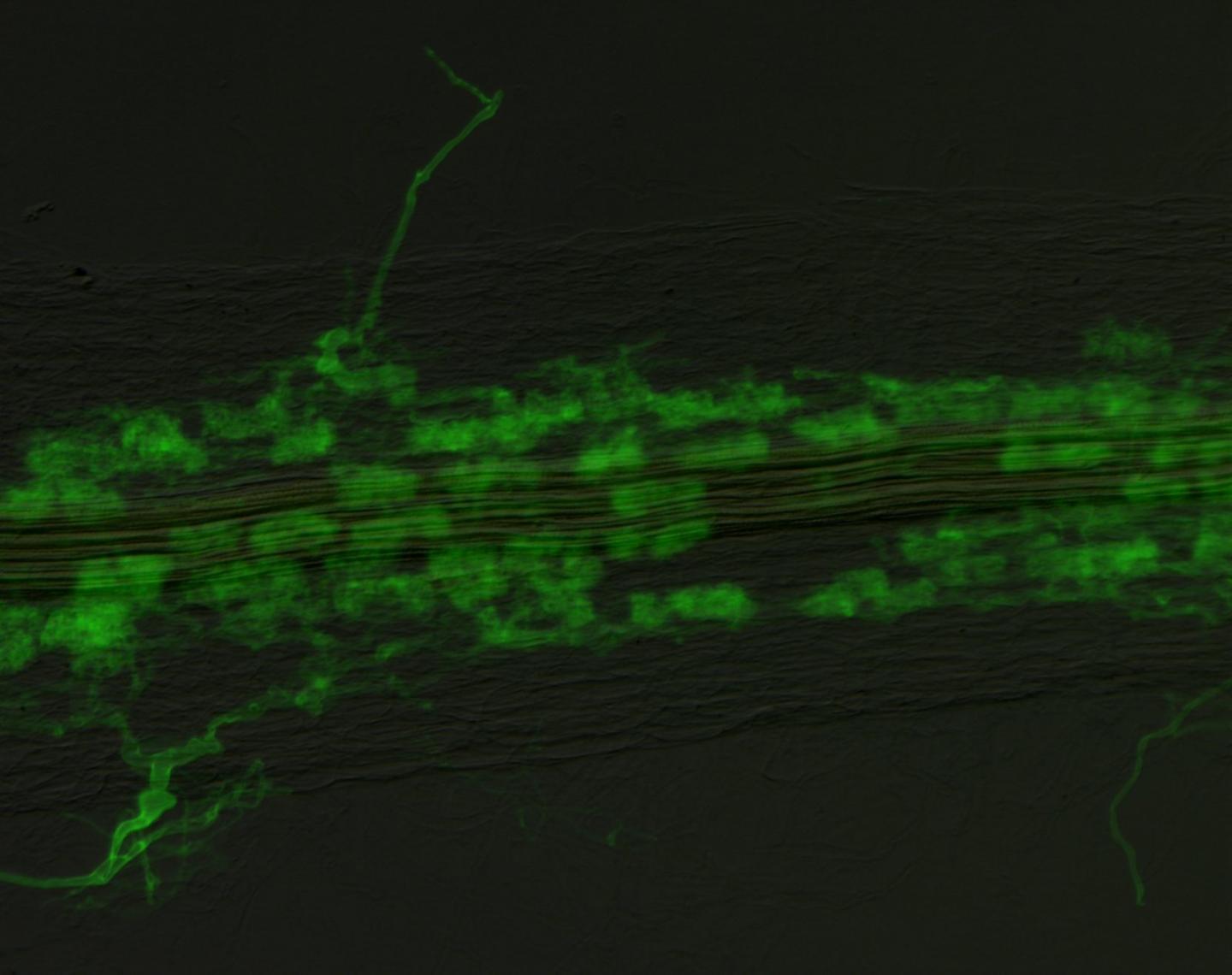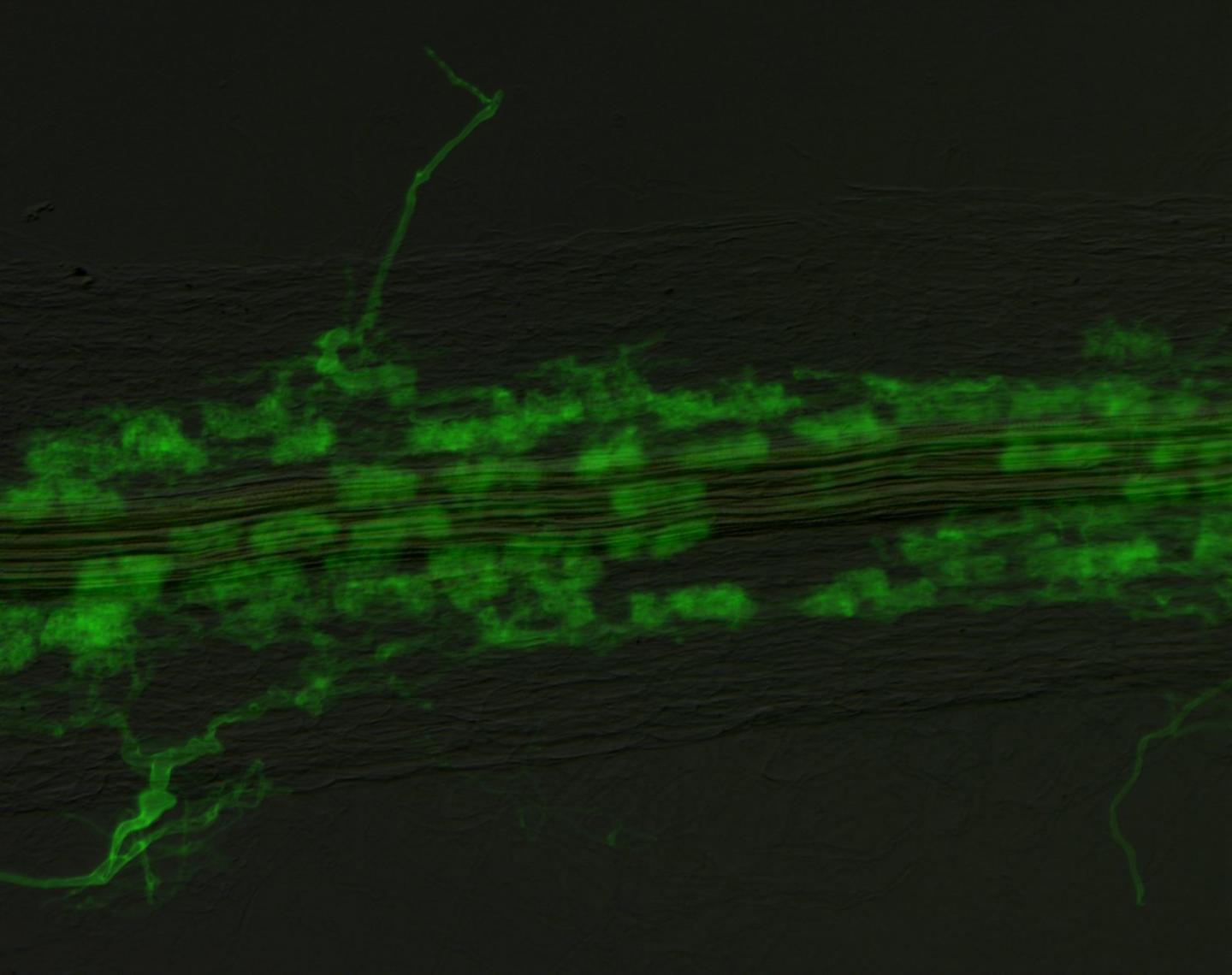
Credit: Dr. Daniela Floss
ITHACA, NY– Walking through a grassy field or forest take a moment to consider what lies beneath the surface. A web of plant roots interacts symbiotically with arbuscular mycorrhizal (AM) fungi that extend their hyphae from the root system further into the earth, accessing nutrients such as phosphates to give to the plant in return for carbohydrates, tit for tat.
Taking a much closer look inside root cortical cells, you will find dynamic, branching fungal structures called arbuscules where the two organisms can exchange their goods. "Each root cell builds a special compartment surrounded by a membrane to house the arbuscule. Within this compartment, the arbuscule first develops and then dies, a process referred to as degeneration. As the arbuscule degenerates, the plant disassembles the compartment and the remnants of the fungus," explains Dr. Maria Harrison of the Boyce Thompson Institute.
Previously, researchers in the Harrison lab showed that the arbuscule degenerates prematurely if phosphate transfer to the plant is blocked. Published this week in Current Biology, the researchers have now identified a set of transcription factors from the plant that regulate this degeneration process. Transcription is the process by which genes are activated, and the activators are called transcription factors. Many transcription factors associated with the development of arbuscular mycorrhiza have been identified, but this is the first report of any plant mechanism driving degeneration.
"The regulation of arbuscule lifespan through arbuscule degeneration has likely contributed to the stability of the symbiosis because it prevents the persistence of fungi that do not deliver phosphate" stated Harrison. "The research described in this paper provides the first insights into the molecular basis of a degeneration program and the transcriptional regulators that control it."
The main obstacle to investigating molecular mechanisms of arbuscule degeneration lies in the dynamic nature of the interaction – within a root system, arbuscules exist in all stages of development and degeneration, making it impossible to isolate only one stage. The authors solved this dilemma by using a mutated version of the leguminous shrub Medicago truncatula in which nearly all arbuscules are in a degenerating state due to their inability to transfer phosphate to the plant.
Working with the mutant roots, the researchers were able to identify a transcription factor, called MYB1, that seemed to be driving this increase in arbuscule degeneration. They confirmed their suspicion by showing that MYB1 is necessary for the expression of several genes associated with arbuscule disassembly. Furthermore, increasing MYB1 levels in wild type Medicago roots severely impaired the fungus' ability to form healthy arbuscules. Taken together, these findings strongly support the idea that MYB1 could be a key to booting the fungus when it's not giving up the goods.
Typically, however, transcription factors do not work alone, but in conjunction with other transcription factors. Considering this, the authors went on to show that MYB1 interacts with at least two other symbiosis-specific transcription factors, NSP1 and DELLA, which are further necessary for MYB1-driven expression of genes associated with arbuscule degeneration; like three musicians coming together to orchestrate a dramatic exit.
But why do we care?
"Regulation of arbuscule lifespan may provide an avenue for obtaining more effective symbiosis," proposed Harrison. Effectiveness of arbuscular mycorrhizal symbiosis is typically measured by how much phosphate the fungus is able to transfer to the plant, especially when considering crop species that may require fertilizers. "If you can extend arbuscule lifespan slightly, possibly by modifying when the degeneration program is triggered, then there is time for additional [phosphate] delivery."
First author Dr. Daniela Floss added, "The knowledge that we gain through investigating the molecular mechanism underlying AM symbiosis will help discover products that specifically target a protein or mechanism to make the symbiosis more efficient."
###
Research reported in this news release was supported by US National Science Foundation grants IOS-1353367, IOS-1127155, and IOS-0820005 and Office of Science (BER), US Department of Energy grant DE FG02-08ER64628.
Writer: Alexa M. Schmitz, [email protected] (607-254-7476)
Media Relations Contact: Keith Hannon (607-254-4253) ([email protected]).
Communications Office
Boyce Thompson Institute
533 Tower Road
Ithaca, New York 14853 USA
To learn more about Boyce Thompson Institute (BTI) research, visit the BTI website.
Connect online with BTI at Facebook and Twitter.
About Boyce Thompson Institute:
Boyce Thompson Institute is a premier life sciences research institution located in Ithaca, New York on the Cornell University campus. BTI scientists conduct investigations into fundamental plant and life sciences research with the goals of increasing food security, improving environmental sustainability in agriculture and making basic discoveries that will enhance human health. Throughout this work, BTI is committed to inspiring and educating students and to providing advanced training for the next generation of scientists. For more information, visit http://www.bti.cornell.edu.
Media Contact
Keith Hannon
[email protected]
607-254-4253
@BTIscience
http://bti.cornell.edu
############
Story Source: Materials provided by Scienmag





